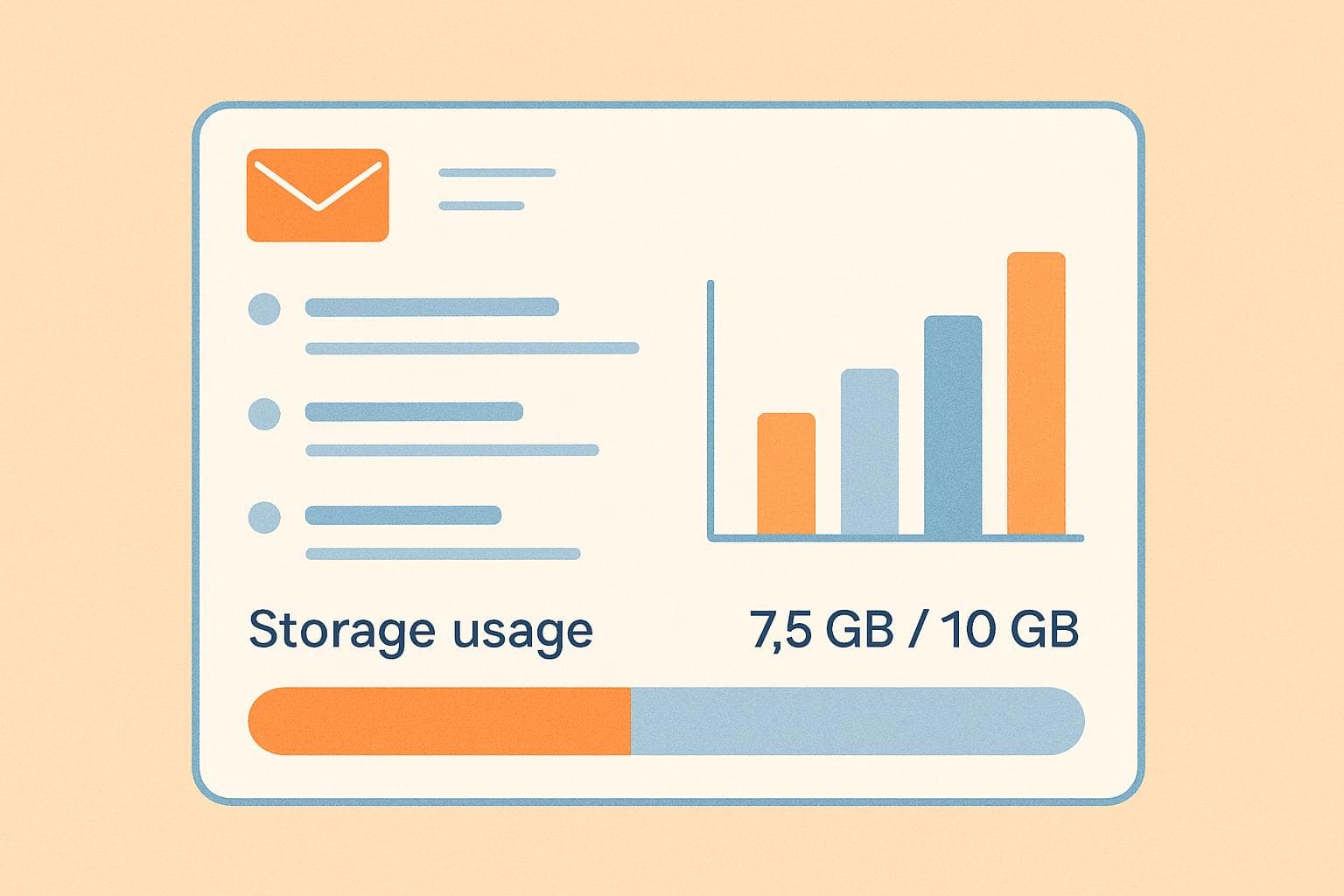Email Storage Usage Estimator
Estimate your email storage usage with our free tool! Input email count and sizes to see if you're nearing your Gmail or Outlook limit.

Email Storage Usage Estimator
Understanding Email Storage Usage
Managing digital clutter is more important than ever, especially when it comes to your inbox. Many of us accumulate thousands of messages over time, often without realizing how much space they take up. Whether you’re using Gmail with its 15GB cap or Outlook with a generous 50GB, knowing where you stand can save you from the dreaded “storage full” notification.
Why Track Your Email Capacity?
Emails might seem small, but attachments like PDFs, photos, or videos can add up fast. A tool to calculate email storage usage helps you visualize the impact of your inbox habits. It’s not just about numbers—it’s about staying organized and ensuring you don’t lose access to new messages when space runs out. Beyond that, keeping tabs on your usage can prompt smarter habits, like regularly clearing out spam or old newsletters.
Taking Control of Your Inbox
If you’ve ever wondered how close you are to hitting your provider’s limit, a quick estimation can be eye-opening. Pair that with simple actions like deleting bulky files or archiving important data elsewhere, and you’ll keep your digital workspace tidy. Take a moment to assess your mailbox today; a little effort now prevents a big headache later.
FAQs
How accurate is this email storage estimator?
Our tool provides a solid estimate based on the data you input, like email count and average size. It’s not exact since email providers may compress data or handle attachments differently, but it’s a great starting point to gauge your usage. If you’re super close to the limit, it’s worth double-checking directly with your provider’s dashboard for precision.
What’s the average size of an email?
Most emails without attachments are around 75-100KB, which is why we suggest 100KB as a default. If you send or receive a lot of images or documents, that average can jump significantly—sometimes to 1MB or more per email. Feel free to adjust the input based on your habits for a better estimate.
What should I do if I’m nearing my storage limit?
If you’re close to maxing out, start by deleting old or unnecessary emails, especially those with large attachments. You can also download important files to your device or cloud storage and remove them from your inbox. For a long-term fix, consider archiving emails or upgrading your plan if your provider offers more space.
